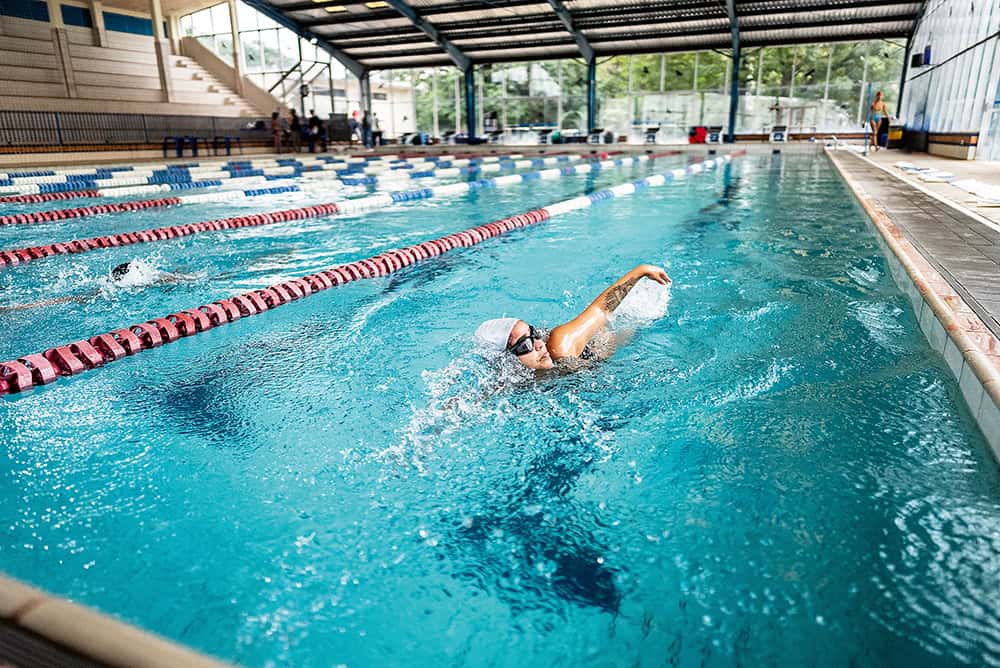The Swedish Tax Agency’s rules allow employers to offer their employees a wellness allowance of a maximum of SEK 5,000 per year as a tax-free benefit. During the pandemic, the University of Gävle increased its wellness allowance to SEK 4,000 per year, the highest of all higher education institutions.
The level of the allowance sends a strong message, says Maria Savela, chair of the local SULF association in Gävle.
“This is a decision made at the highest management level and shows clearly that there is a willingness on the part of the employer to try to use different solutions and resources to improve employees’ health and wellbeing.”

Namn Efternamn
Chair of the local SULF association in Gävle
Universitetsläraren’s review of wellness allowances covered 34 universities and colleges. At 23 of these, the wellness allowance for employees remains at the same level as in 2021, which was when we conducted our previous survey. Since then, the ceiling for tax-free wellness allowances has been raised to SEK 5,000.
“Now that the maximum amount has been increased, we will look at our budget and consider whether we should implement an increase for our employees. I am not going to make any promises, but it is possible,” says Micael Melander, Director of the University of Gävle.
He sees the level of the wellness allowance as part of being an attractive employer. It feels good, he says, to be at the top of the list.
“We do believe that it is good for us as an employer. The wellness allowance is also a fairly simple way to try to prioritise the work environment and the health of our employees.”

Micael Melander
Director of the University of Gävle
Malmö University has the second highest wellness allowance. After an increase of SEK 1,000 since 2021, it is now SEK 3,500. Eight higher education institutions offer an allowance of SEK 3,000. (The full list can be found at universitetslararen.se).
When it comes to training and fitness facilities in the workplace, 15 universities and colleges have a gym on campus that staff can use free of charge, our survey shows. A further six report that there is gym on campus but that it is not free of charge for staff. A number of these, however, offer their staff discounted gym passes.
At 23 higher education institutions, employees are entitled to take ‘wellness hours’. At Blekinge Institute of Technology and University West, staff can use 30 minutes of their working time per week for wellness.
Employees at the Swedish Defence University have up to three hours, but this applies to officers who have fitness training in their job description. Others have one to three hours a week, depending on their work.
At the turn of the year, the Swedish Defence University also introduced a wellness allowance of SEK 2,400 for all employees. People had been asking for it for a long time, says Niklas Wikström, chair of the local Saco-S association.
“I think most people were very happy that it was introduced, and I have not heard that employees have expressed any opinions about the level of the allowance.”
Given the current situation in the world, the role of the Swedish Defence University is expected to grow. This will have an impact on workloads and the work environment, says Wikström.
“We have seen a sharp increase in the number of students and participants in contract education programmes, so I think it is important that staff also have opportunities for recovery and wellness if this to work.”
Employees at the Swedish Defence University in Stockholm have access to gym facilities free of charge. The university also has a site in Karlstad, where the staff already had a wellness allowance because there are no gym facilities at the workplace.
Of the 34 universities and colleges surveyed, only Luleå University of Technology, LTU, has no wellness allowance at all. Instead, staff are offered two wellness hours per week and the employer pays for an annual membership of a gym on campus.
The idea is that colleagues will train together during working hours rather than individually in the evenings, says Tommy Viklund, HR manager at LTU.
“We see benefits in going and training with colleagues, and we believe that it is good for people to take a break during the day.”

Tommy Viklund
HR manager at LTU
However, the agreement with the campus-based gym expires after 2025. This spring, employees will therefore be asked if they would prefer a wellness allowance instead, or whether we should sign a new agreement with the gym, he continues.
“Many employees at the university would like a wellness allowance, and the number has grown in recent years. The matter is up for discussion and people have different opinions.”

The Royal College of Music, KMH, has the second lowest wellness allowance, offering a maximum of SEK 1,000 per year. That is an increase of SEK 400 since 2021. Employees at KMH can take one wellness hour a week, and there is a gym that is free of charge for employees. Halmstad University has an allowance of SEK 1,500 per year. In Halmstad, there is a free gym for staff, but they do not have a wellness hour.
Universitetsläraren also asked what proportion of staff used the wellness allowance last year. KMH is at the bottom of the list, with 22 per cent. The wellness allowance was used most by employees at the Swedish School of Sport and Health Sciences (GIH) and Karlstad University, where 80 and 77 per cent respectively made use of their annual allowance.
Karlstad University has increased its wellness allowance to SEK 3,000 per year, up by SEK 1,000 since 2021. The allowance at GIH is SEK 2,400.
At the University of Gävle, which has the highest wellness allowance of all higher education institutions, 62 per cent of staff used the allowance last year.
“That is a reasonably high level,” says Micael Melander, director of the university.
“I say reasonably because it could be even higher, and we will look into what we can do to improve it.”
They need to market the wellness allowance internally and provide more information about what the allowance can be used for, he says. He also feels that the process for reporting wellness expenses could be improved.
“I think the process is quite simple when I do it myself, but I know that it could be a small obstacle, that some people find it difficult to have to pay and then claim the cost after.”
So the university is now looking at different options.
“There are a number of solutions used by other organisations,” says Melander.
“Apps that mean you don’t pay anything yourself.”
















